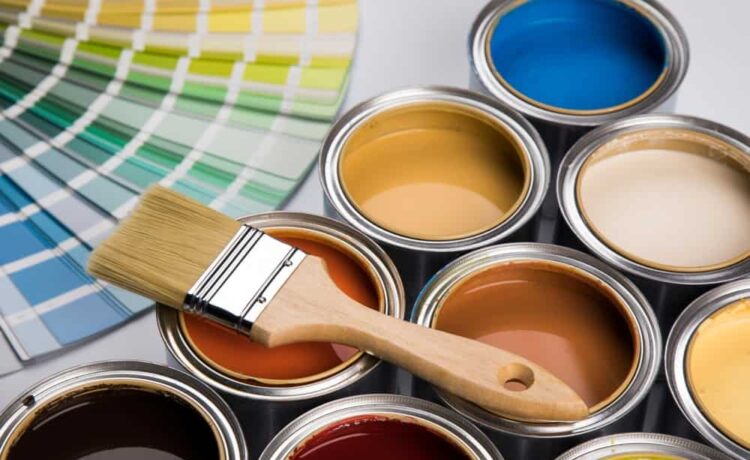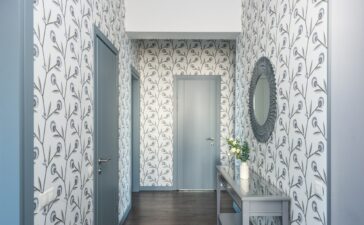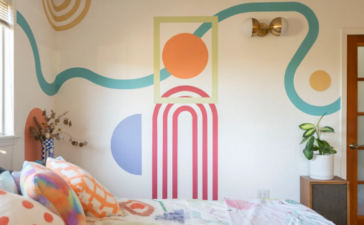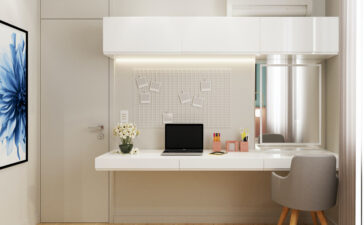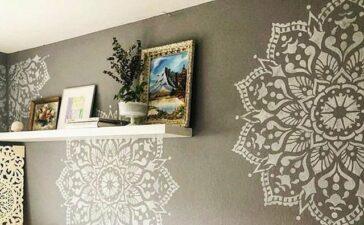Hello, to all the color lovers! The world is like a white wall, and we paint our life with the colors of love, enthusiasm, and amazing stories.
Painting is a transformative art that can breathe new life into any space. Whether revamping your living room, refurbishing furniture, or embarking on a creative project, choosing the right type of paint and finish can make all the difference.
In this guide, we’ll take you on a colorful journey through 17 different types of paints and finishes, providing you with the inspiration and knowledge you need to tackle your next project with confidence.
Different Types of Paints and Finishes
Whether you’re an artist, a DIY enthusiast, or simply looking to transform your living spaces, the choice of paint and finishes can make all the difference.
With a vast array of options available, it’s essential to explore the unique characteristics of each type. We’ll delve into the 17 types of paints and finishes, unlocking the secrets to choosing the perfect paint for every room in your home or office.
Get ready to unleash your inner designer and create spaces that reflect your style and personality.
1. The Refined Touch Of Matte Paint

Let’s begin with a classic choice, matte paint. This finish has a non-reflective surface that adds a touch of elegance to any room. Matte paint is perfect for hiding imperfections on walls and ceilings, creating a cozy, intimate ambiance.
2. Embodying Elegance with Eggshell Paint

If you’re looking for a subtle sheen that strikes a balance between matter and gloss, eggshell paint is an excellent choice. It offers a soft, velvety finish that is easy to clean, making it suitable paint for high-traffic areas like living rooms and bedrooms.
3. Sophistication in Satin Paint

Satin paint is the way to go for a slightly more lustrous finish. It has a smooth, silky appearance and works well on walls, trim, and furniture. Satin paint is durable and easy to clean, making it a practical option for kitchens and bathrooms.
4. Gloss Glamorous Paint

Gloss paint is the answer if you seek a sleek and glamorous look. With its high sheen and reflective surface, gloss paint adds a touch of luxury to any space. It is commonly used on doors, cabinets, and trim but can create stunning accent walls.
5. Semi-Gloss Paint

Falling between satin and gloss, semi-gloss paint strikes the perfect balance. It offers a subtle shine and is moisture-resistant, making it an ideal choice for kitchens and bathrooms. It is also a popular choice for architectural details and moldings.
6. Flat Paint

Flat paint is known for its ultra-matte finish, which creates a smooth and even surface. It’s perfect for ceilings and low-traffic areas where a sleek, understated look is desired. However, remember that flat paint is less resistant to stains and may require touch-ups over time.
7. Metallic Paint

Looking to add a touch of shimmer and sophistication to your project? Metallic paint is the way to go. Available in various shades, it creates a stunning visual effect when applied to furniture, accent walls, or decorative pieces.
8. Captivating with Chalk Paint

Embrace your inner artist with chalkboard paint. This type of paint transforms any surface into a writable and erasable chalkboard. Perfect for kitchens, playrooms, or home offices, it lets you get creative and jot down notes or doodles whenever inspiration strikes.
9. Texture Paint

Textured paint is an excellent option for those who want to add depth and dimension to their walls. From smooth stucco to textured patterns, this paint can create stunning visual effects and bring a unique character to any room.
10. Power of Primer

While not a paint finish, primer is crucial in preparing surfaces for painting. It helps create a smooth and even base, enhances paint adhesion, and improves the durability of the final coat. Don’t skip this important step!
11. Enamel Paint

Enamel paint offers a durable, glossy finish resistant to wear and tear. It’s commonly used on metal surfaces like doors, window frames, and railings. Enamel paint comes in oil- and water-based formulas, catering to different preferences and project requirements.
12. Embracing Versatility with Acrylic Paint

Acrylic paint is a versatile option used on various surfaces, including canvas, wood, and ceramics. It dries quickly, is available in various vibrant colors, and can be easily mixed to create custom shades. It’s a favorite among artists and crafters alike.
13. Oil-Based Paints

Known for its durability and richness, oil-based paints create a smooth and lustrous finish. It’s commonly used on trim, cabinets, and furniture and provides excellent coverage. Remember that oil-based paint requires longer drying times and proper ventilation during application.
14. Wonders of Watercolour Paint

Watercolour paints are a beloved medium among artists for their transparent and ethereal qualities. It’s perfect for creating delicate washes, blending colors, and capturing the beauty of landscapes and still life. Watercolor paints come in pans or tubes and can be used on specialized watercolor paper or canvases.
15. Embracing Creativity with Spray Paint

Spray paint is a game-changer when achieving a smooth finish on surfaces like furniture, metal, or even walls. It offers quick application, excellent coverage, and a professional-looking result. Just remember to use it in a well-ventilated area or outdoors.
16. Exploring the Digital Realm: Digital Paint

In the digital age, traditional art mediums merge with technology, giving birth to digital paint. Utilized in digital painting software, this medium opens a new door for artists, allowing them to experiment with an infinite range of colors and textures.
17. Unleash Imagination with Glow-In-The-Dark Paint

As we near the end of our colorful journey, we encounter the captivating world of glow-in-the-dark paint. Whether used for highlighting artistic details or creating a whimsical ambiance, this luminescent paint brings magic to any project, captivating viewers with its ethereal glow.
Interior vs. Exterior Paint, What Sets Them Apart?

When choosing the right paint for your home, understand the difference between interior and exterior paint. While they may appear similar at first glance, these two types of paints are formulated to meet the specific demands of their respective environments.
Let’s explore the key differences between interior paint and exterior paint to ensure you make the right choice for your painting project.
1. Composition
One primary difference between interior and exterior paint is their composition. Interior paint is designed to be applied indoors, exposing it to less extreme conditions.
It typically consists of a water-based (latex) or oil-based(alkyd) formula. On the other hand, exterior paint is specifically formulated to withstand harsh weather conditions, including rain, UV exposure, and temperature fluctuations.
It often contains more additives, such as fungicides and UV protectants, to enhance durability and weather resistance.
2. Durability
Exterior paint is engineered to withstand the elements, making it highly durable. It can endure temperature variations, moisture, and even direct sunlight without significant fading or peeling. In contrast, interior paint doesn’t require the same level of durability since it is not exposed to the same environmental stressors. Interior paint focuses more on providing a smooth finish and easy cleaning, as it’s typically subjected to regular wear and tear from daily activities.
3. Resistance to Elements
Exterior paint offers superior resistance to moisture, mold, mildew, and UV rays. Its robust formulation protects your home’s exterior surfaces from water infiltration, preventing rot and damage. Exterior paint also incorporates specialized pigments that enhance color retention, ensuring your home maintains curb appeal for years. Interior paint, while not subject to the same level of moisture and UV exposure, still offers some resistance to staining and scrubbing, as it needs to withstand cleaning and occasional spills.
4. Flexibility and Expansion
Due to the constant expansion and contraction caused by temperature changes, exterior surfaces require paint that can flex without cracking or peeling. Exterior paint accommodates these structural movements, ensuring long-lasting protection for your home’s exterior. Interior paint, on the other hand, doesn’t need to account for such movements, as interior surfaces generally experience minimal expansion and contraction.
5. Aesthetics
While interior and exterior paint offers various colors and finishes, exterior paint often provides a broader selection of hues designed to complement outdoor elements. Exterior paint colors are influenced by factors such as architectural styles, neighborhood guidelines, and the surrounding landscapes. Interior paint, on the other hand, allows for more creativity and personal expression, with a vast array of colors, sheens such as matte, satin, or glossy, and specialty finishes to suit any interior design scheme.
6. VOC Content
Another essential aspect is the paint’s Volatile Organic Compound (VOC) content. VOCs are chemicals that can emit harmful fumes, contributing to indoor air pollution. Interior paint formulations with low or zero VOC options have significantly reduced VOC levels, making them safer for indoor use. Exterior paint may contain slightly higher VOC levels due to the additional protective additives needed for outdoor durability. It’s essential to check the paint label for VOC information and choose a paint that aligns with your preferences for environmental friendliness.
Best Paints According to Room
1. Bedroom

Your bedroom, a sanctuary of peace and relaxation, deserves a paint that fosters tranquillity. Consider opting for a soothing shade of matte paint, which helps to create a serene atmosphere conducive to restful nights. Colors like soft blues, muted greens, or calming neutrals are excellent choices for your oasis.
2. Office

Productivity and focus are key when it comes to your office space. Consider using a bold and energizing color like vibrant yellow or invigorating red to stimulate a dynamic work environment. If you prefer a more sophisticated ambiance, a satin finish in a neutral tone can add a touch of professionalism while maintaining a calm atmosphere.
3. Living Area

Your living area is the heart of your home, a space to entertain guests and create lasting memories. For a warm and inviting ambiance, opt for an earthy tone like terracotta or a rich shade of warm beige. A satin or eggshell finish will add a subtle sheen and durability, ensuring your walls can withstand everyday wear and tear.
4. Kitchen

The kitchen, the bustling hub of culinary delights, calls for paint that can withstand moisture and frequent cleaning. Semi-gloss or gloss paint finishes are the go-to options for this area, as they are highly resistant to stains and can be easily wiped clean. Light and airy colors like soft whites, pastel blues, or gentle greens can also create a fresh and inviting kitchen environment.
5. Children’s Rooms

When it comes to painting kids’ rooms, let your creativity run wild! Bright and vibrant colors can spark imagination and foster a playful atmosphere. Consider using washable, low-VOC (volatile organic compounds) paint to ensure a safe and healthy environment for your little ones.
Conclusion
Congratulation, my fellow art enthusiast, for embarking on this vibrant exploration of 17 types of paints and finishes!
From the timeless elegance of oil paint to the modern versatility of acrylics and from the rustic charm of milk paint to the captivating allure of glow-in-the-dark paint, we’ve delved into a world where creativity knows no bounds.
While interior and exterior paints share similarities, such as color options and finishes, their formulation and performance characteristics differ significantly.
Understanding the specific demands and conditions of the surfaces you plan to paint will help you select the appropriate type of paint, ensuring longevity, protection, and a beautiful finish for your home inside and out!





